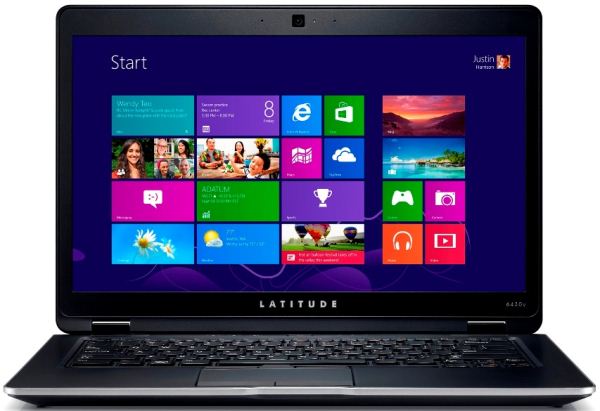Dell Latitude 6430u Brings Wilocity's 802.11ad WiGig Solution to Consumers
by Ganesh T S on November 1, 2012 11:00 AM ESTWireless networking has been making rapid strides in the last decade. Starting with the 11 Mbps 802.11b in mid-1999, we now have more than 1 Gbps of wireless throughput with 802.11ac. Wi-Fi technologies have worked in the 2.4 GHz and 5 GHz bands till now. Many companies have tried to use the 60 GHz band for communication (mainy wireless video). WiGig is a 60 GHz technology aimed at wireless data transfer similar to Wi-Fi. However, operation in the 60 GHz band implies that it is meant to be more of a in-room technology. WiGig is being standardized under the 802.11ad task group.
Wilocity is one of the leading WiGig silicon vendors. They have been demonstrating their solution in various trade shows over the last year or so. In fact, we had covered their docking solutions at the 2012 CES as well as Computex 2012.
One of the main challenges for WiGig was to gain market traction. Something had to make a business case for WiGig and Intel's Ultrabook initiative emerged as the perfect opportunity. Pitching a standalone 60 GHz solution wasn't going to cut. So, Wilocity teamed up with Wi-Fi vendors to present a tri-band solution (2.4 GHz, 5 GHz and 60 GHz) to the notebook manufacturers. Qualcomm-Atheros was one of their first partners and they also teamed up with Marvell recently. As you can see from our earlier coverage, Wilocity pitches WiGig based docking stations for Ultrabooks. With the Windows 8 product launches, we are seeing the first such device making its way into the hands of the consumers.
The Dell Latitude 6430u Enterprise Ultrabook (the first Ultrabook in the Latitude line) incorporates the Wilocity / Qualcomm-Atheros tri-band chipset for the wireless docking and networking capabilities. The Dell WiGig-enabled docking station (also powered by Wilocity, obviously) enables the Ultrabook to wirelessly connected with a number of I/O devices such as external GPUs, storage, peripherals and expansion slots. It is no wonder that Dell is the first to market with a WiGig solution, considering that they are one of the founding members of the WiGig Alliance.
Pricing for the Ultrabook (as well as the docking station) is not yet public, as both are expected to be B2B solutions. The response to the Ultrabook / dock will be interesting to watch, as it will be an indicator of when (and whether) the solution will become available to consumers directly.











12 Comments
View All Comments
nathanddrews - Thursday, November 1, 2012 - link
and take my money!Now we just need wireless power.
nevertell - Thursday, November 1, 2012 - link
Wireless power is a lot harder to direct and control, at least for noe. Whilst it'd be cool to charge your laptop by entering a room, it'd be sucky if your forks heayed uo as welldanjw - Thursday, November 1, 2012 - link
Wireless power is wasteful! The last thing we need is to introduce more inefficiencies into mobile devices. What is it with people and cables? Is it really that big of a chore to plug something in? Personally, I only use WiFi when necessary, it is totally insecure.This Guy - Friday, November 2, 2012 - link
Cheap computer power supplys often have losses of 30%+. If the wireless charger is a mat and dell designs the system to minimise the air gap then it's losses could be less than 10%. Yes this is on top of the dock's power supply losses but a standardised mat could reduce phantom draw and ewaste as fewer power supplys would be needed.Darkstone - Friday, November 2, 2012 - link
The latitude Z600 from 2 years ago has wireless charging:http://www.dell.com/us/business/p/latitude-z600/pd
Google it.
rallyhard - Thursday, November 1, 2012 - link
I wonder how many Mbps or Gbps this is?External GPU over wireless?! That would be extremely impressive.
BTW, I couldn't get my comment to post under IE10
Spivonious - Thursday, November 1, 2012 - link
Wikipedia says a theoretical 7Gbps.ClockworkPirate - Thursday, October 10, 2013 - link
The problem with an eGPU would be latency, even if you could get throughput up high enough (from what I've read, you'd need even more than Thunderbolt's 20 Gbps to run a high-end card).yefi - Thursday, November 1, 2012 - link
I'd like to see what the real-world throughput is going to be - USB 2.0 speeds maybe?Impulses - Friday, November 2, 2012 - link
Isn't this what Thunderbolt has been promising for a while? Yet the only somewhat solid implementation we've seen was on Apple's displays, and adoption is still very slow. I'm not holding my breath for this, I'm not even sure why most docking usage cases would benefit from going wireless. Streaming wirelessly to a big display would be the one standout but WiDi and Miracast stands a far better chance.